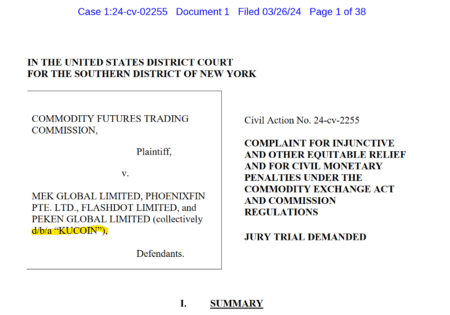The drama around Rene Benko and his Signa continues. The real estate conglomerate allegedly needs up to €2 billion to avoid bankruptcy. Existing investors no longer want to provide financing, and talks with the Saudi Arabian Crown Prince Mohammed bin Salman and his fund have failed. On Friday, the group’s German subsidiary, Signa Real Estate Management Germany, has filed for bankruptcy signaling the beginning of a potential downfall for the extensive network of over a thousand companies under the Signa umbrella.
The Crumbling Signa Real Estate Portfolio
Signa‘s precarious situation is underscored by its urgent need for €2 billion to stay afloat. With debts amounting to €1.5 billion due by mid-2024, the group’s stability is in jeopardy. Signa, with holdings worth 27 billion euros and €25 billion in development projects, has been a significant player in the real estate sector. Numerous banks, insurance firms, and pension funds have been involved in financing and investing in Signa‘s ventures.
Read our reports on Rene Benko here.
The insolvency of Signa Real Estate Germany highlights a larger issue within the Signa Group. Signa Prime, the parent company, is seemingly unable to provide adequate financial support to its subsidiaries, the German Spiegel reported. This has resulted in a critical liquidity crunch, with Signa Holding requiring about €500 million in the near future.
Signa‘s portfolio boasts prestigious properties like the Elbtower in Hamburg, KaDeWe in Berlin, and the Park Hyatt Vienna. However, the group’s development arm, known for its projects in Germany, Austria, northern Italy, and Switzerland, is now facing an uncertain future.
The German arm of Signa Prime Selection, which employs 150 people and provides central services for the group’s real estate in Germany, is particularly impacted. Notably, it does not hold interests in real estate itself.As the situation unfolds, reports suggest a potential bankruptcy filing for the entire Signa Group could be imminent, with employee meetings planned to discuss the insolvency and future steps. Amidst this turmoil, Signa Group has refrained from commenting, and the court has not been available for immediate feedback.This crisis comes at a time when Germany, Europe’s largest economy, is already grappling with a property crisis triggered by rising interest rates and escalating building costs.
The Troubled Signa Lenders
The crisis at Signa is not just a standalone problem but is also dragging financial institutions in Austria, Germany, and Switzerland into the quagmire. Austrian banks have a significant exposure of €2.2 billion to Signa, with major shares held by Raiffeisen Bank International (RBI) and UniCredit‘s Bank Austria. Other Austrian banks like Raiffeisen Landesbank Niederoesterreich-Wien, Raiffeisen Landesbank Oberoesterreich, and Erste Group are also impacted.
The situation has also caught the attention of Swiss regulators. The Zurich-based Julius Baer Group, with around €600 million in outstanding loans to Benko, is being closely monitored by Swiss regulator Finma. This exposure led to a set-aside of 70 million francs for bad debts and a significant 16% drop in Julius Baer‘s share value.
Good And Expensive Friends
Adding to the complexity are allegations of political patronage. Reports indicate that former Austrian Chancellor Alfred Gusenbauer received approximately €7 million for consultancy from Signa between 2020 and 2022. Gusenbauer’s role on the supervisory board of several Signa companies, for which he was reportedly compensated handsomely, raises questions about the group’s governance and ethical practices.
The Austrian political magazine ZackZack reported on the strange supervisory board meetings in which Gusenbauer participated. No trace of supervision. No questions were asked. The responsibility of the supervisory board members under the leadership of chairman Alfred Gusenbauer was apparently not recognized.
The fall of Signa Group, should it happen, could mark one of the largest bankruptcy cases in European history, affecting a wide range of financial institutions and stakeholders.





